In 2003, Gregory David Roberts‘ novel Shantaram was a hefty commitment for readers who delved into the 936-page tome, which follows the adventures of a convicted Australian bank robber who escapes Pentridge Prison and flees to India to get lost in the Bombay underworld of the 1980s. It would take just as much of a commitment — over 20 years — to bring the book to the big screen, as several iterations (starring Johnny Depp as fugitive Lin Ford, and later, Joel Edgerton) fell apart. Last year, the project finally came to fruition on Apple TV+ which debuted a 10-part series adaptation starring Charlie Hunnam.
Created by Eric Warren Singer and Steve Lightfoot, the series began filming in 2019 in Australia, and it was shot by Cinematographer Stefan Duscio, who grew up Down Under in the town of Cobram, making his bones mostly on locally-shot commercials, music videos, shorts, and features. Last year, Duscio won the Gold Tripod for Best Cinematography for his work on The Dry at the National Australian Cinematographers Society Awards. His other credits include The Invisible Man and Upgrade with writer-director Leigh Whannell, with whom he has another collaboration in the works.
Below the Line recently spoke with Stefan Duscio via Zoom from his home in Melbourne, where he was in the sweet spot of being “wide awake” after a jet-lag-inducing flight from the States. Duscio animatedly discussed how going back and forth between the book (which took him over two months to finish reading) and the teleplays inspired the look of the series, from color palettes of prison grays and blues to sunsets of golds and reds.
Duscio also discussed the challenges of filming during the pandemic, which ultimately found its way to Australia, and being able to shoot in the actual locations depicted in the novel, such as Pentridge Prison. Despite the challenges of shooting during the rainy season in Thailand, Duscio went with the flow and delighted in creating the lush and romantic atmospheres illustrated in the narrative, as well as some grittier moments as well.
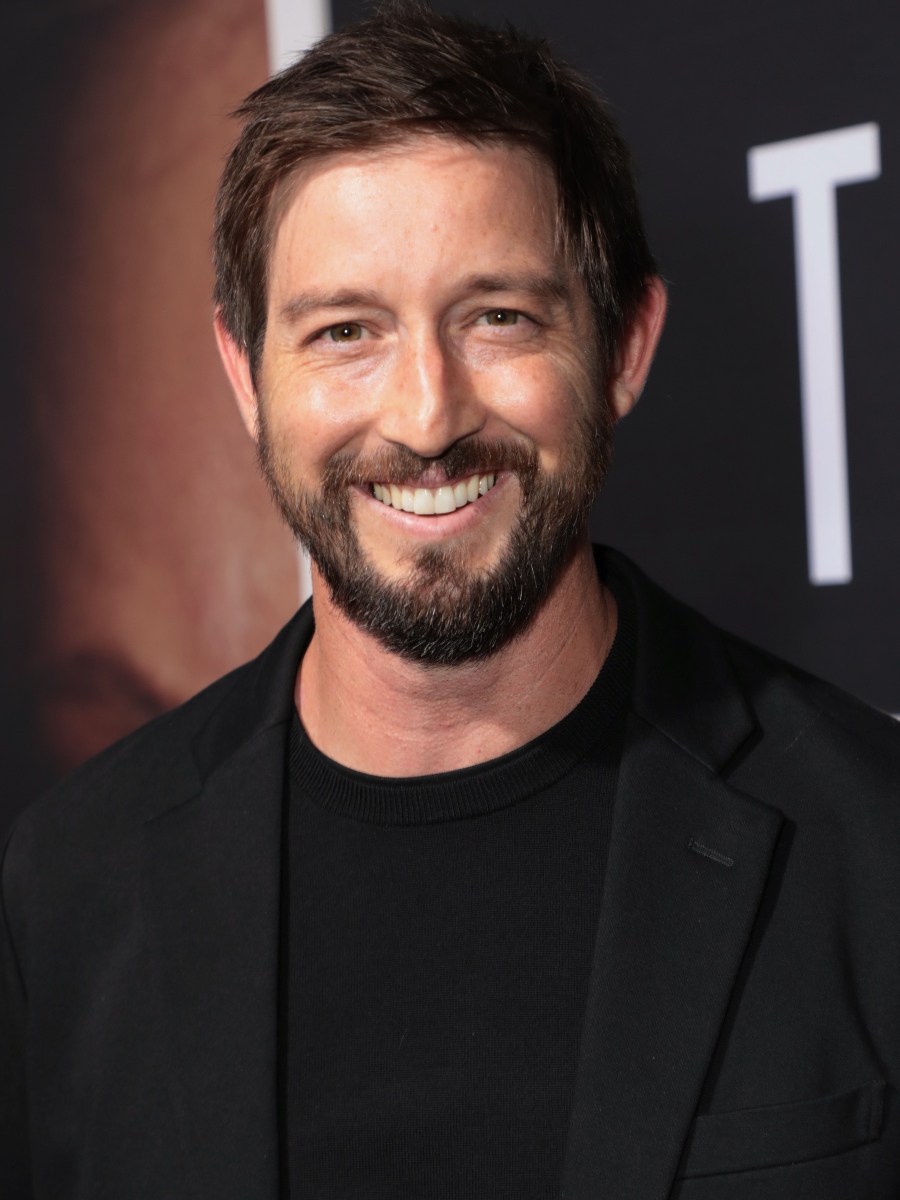
Below the Line: How did you initially got involved in this project? Tell me that story.
Stefan Duscio: I initially got involved because the showrunner, Steve Lightfoot, and Director Bharat Nalluri interviewed me. I think they may have heard of my work in Australia, and they were looking to film in Melbourne, a mix of Melbourne and Thailand, and knew that I was a local cinematographer in Melbourne. Phil Jones was the first AD they were working with, and I worked on many productions with Phil. So yeah, it was a bit of a cold call, but I was thrilled to receive that call.
BTL: You do a great job making Australia and Thailand pass for India, so what can you tell me about the shooting locations for this series?
Duscio: Great. Well, I hope so. We filmed across Melbourne, Australia, and Bangkok in Thailand, and then also a lot of second unit work was shot throughout 2022 in Mumbai which was amazing because that helped fill in a lot of holes that we weren’t able to achieve during principal photography in 2021. Of course, we shot Melbourne for Melbourne for a lot of splashbacks throughout the 1970s, and we mostly used Bangkok as a stand-in for Mumbai, which at first sounded daunting but then given the way we had to run the production during Covid, and having to sort of lock off [a] large [number] of areas for the production to operate safely, it worked out really well.
BTL: Where were the scenes in the crowded city streets filmed?
Duscio: We were able to operate in this mini backlot in kind of downtown Bangkok where we could own all these city blocks and basically create mini Colaba streets including our Rinaldo set and our guest house set, as well as many other locations that we could create, like cafes and bars and hairdressers. It was amazing. It felt quite freeing, and we also built the large slum, you know, about an hour out of Bangkok in a backlot, which was amazing. Many of those things we kind of would’ve had to do anyway in that way if we were filming in Mumbai for real. So it worked out really well.
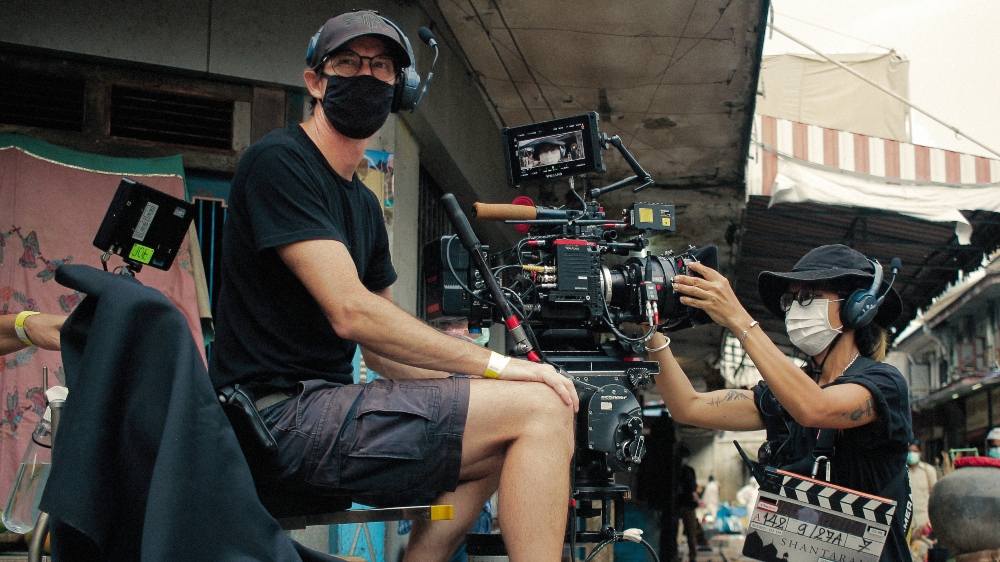
BTL: It seems like you’re really in a bustling market in India. Talk about shooting in those tight little spaces in the markets and how you got your crew through them.
Duscio: That’s great, like huge credit to our Thai art department because they just put so much detail into that market and all the sets, but that market in particular just felt so lived in and all the extras just felt like they were all doing something. We all worked really hard to make that feel believable. On a camera level, a lot of that work was done with steady cam to try and sort of weave around the extras, weave around the stalls, be quite nimble, be able to move with the actors, and let you know Charlie [Hunnam] and Shubham [Saraf] do whatever they needed to do with the blocking and be free enough to block the scene as they saw fit without me kind of laying down tracks or locking cameras in positions that might have made them feel restricted. We were often quite free and roaming with the camera for that reason.
BTL: Talk about the color palette. How did you sort of create those golden reds and golds for India?
Duscio: Through the amazing help of our production designer, Chris Kennedy, and our beautiful costumes by Margot Wilson as well. She did a beautiful job with those lovely ambers and beiges and yellows, and she was able to help create such a beautiful palette with Chris. We all spoke about that a lot with Steve Lightfoot and Bharat Nalluri; we all sort of got in on tonal meetings a lot. Very generally, we were trying to make India feel warmer and more naturalistic, and all our Melbourne flashbacks just be a little bit cooler and more neutral. A lot of the Melbourne flashbacks were shot during winter, so we kind of leaned into that on a wardrobe level as well. We went for darker tones.
They were my jumping-off point and then, in the final color grade with our amazing colorist Tom Pool, we kind of leaned into that — we just sort of pushed those colors a bit more saturated in India, [and] leaned into the reds and warmth without doing that thing where, you know, often filmmakers are accused of overdoing those looks when they go to countries like Mexico or India, and it’s just like crazy tobacco filters on the lens. We didn’t wanna go that far, so we were trying to push it somewhere a bit more naturalistic.
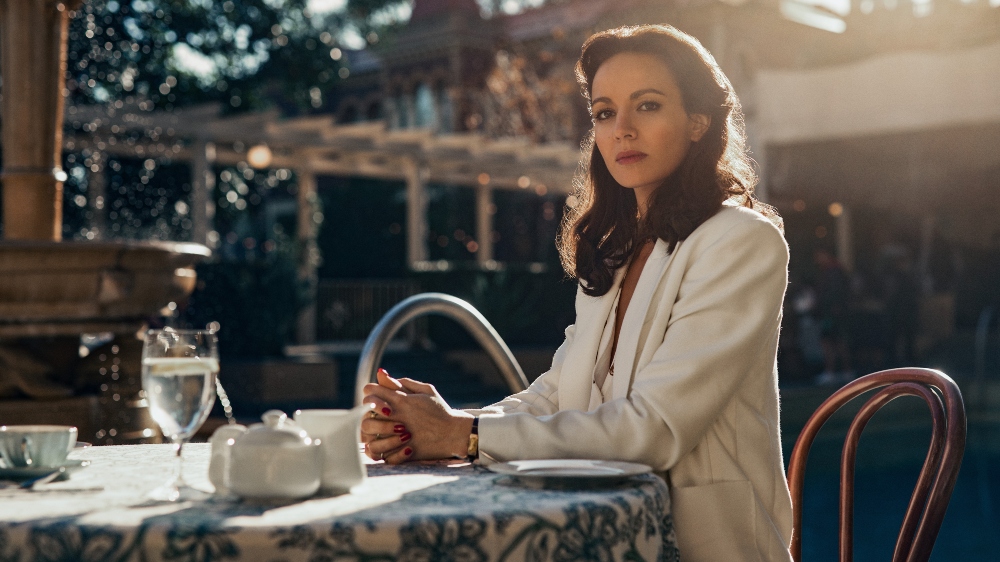
BTL: How would you describe shooting the prison scenes? Was this an actual prison?
Duscio: That was the real Pentridge Prison in Melbourne, where [our] hero actually escaped from. We actually shot on the same rooftop that Gregory David Roberts had scaled in broad daylight and escaped prison. A lot of that prison now has sort of been converted into a shopping mall, but there were still existing walls and existing cell blocks that still exist there that we were able to film in for real. We got a lot of amazing history lessons from the current caretakers of the prison who are able to tell us stories about our prisoners, [and] point to where things really happened.
They actually showed us the attic that he broke out and escaped from. It was mind-blowing. So we tried to stick to that as much as possible. It needed a little bit of CG augmentation to extend the prison and make it look like it used to, but much of it was still remaining. We built the attic on a stage just to be able to be safe up there with actors and be cutting through a roof piece with a buzz saw. All the prison interiors [and] exteriors are all there.
BTL: How did you get your camera through the air vent that they crawled through to escape?
Duscio: There’s like an air vent that we built on stage that he kind of escaped through. [The shot] where Charlie’s weaving through with the lighter was done with a pretty elaborate camera rig where we put probably about 20 feet of Tri Truss off the end of a dolly and track and the 20 feet of Tri Truss protruded into the vent with a small camera rig off it, and it kind of pulled back with Charlie as he kind of shimmied through the vent. We had our key grip in Melbourne, Glenn Arrowsmith, devise that once we gave him the brief of, “how do we pull back in a tiny event with Charlie?” If I were to actually hand-hold a camera in there and do it with Charlie, it would’ve been a mess. I’m happy with how that turned out.
BTL: And I love the lighting of this series because there are so many scenes where you’re just lighting with a lighter or a lamp.
Duscio: Bharat, our director, really pushed me to light things a certain way — they wanted realism, in that sense. Steve Lightfoot was often saying to me [that] when they’re in that attic, he wants it to feel like the only light they have is the lighter, and I think he was really taking his cues from the book in that sense [in] that they were sort of scared and alone in that attic. They didn’t know whether the workmen below them could hear anything they were doing. We all felt it added a lot to the tension of that. So I was shooting on a very sensitive, high-speed lens to be able to achieve that, and it was quite a unique lens — I could shoot in really, really low light and barely fill any film lights in there. I had a tiny bit just to be able to see into the shadows a bit more, but 90 percent of that scene was lit by just the lighter.
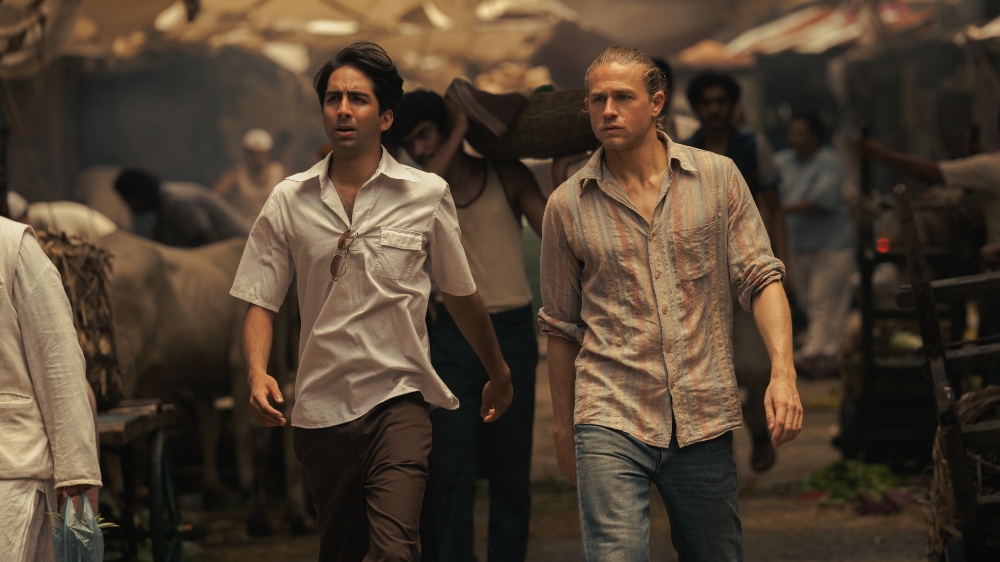
BTL: So cool. What other lighting techniques did you use?
Duscio: In the slum, for example, in Prabhu’s hut, I tried to motivate a lot of it from his lamps in there that were firelit, but I tended to cheat a little bit more in there just to be able to see the actors’ face and performance a bit more. The idea was to feel like it was all coming from those lamps. I used them as much as I could. I only cheated when I had to but I’m not afraid to cheat sometimes [laughs].
BTL: Some of the other shots that were so beautiful were your sunsets and your sunrises. Can you talk about capturing those?
Duscio: Often they’re quite well-planned because as, you know, like sunset or sunrise is so fleeting, yet it takes so long to be able to shoot scenes. So when we do make a decision as a team to shoot during dawn or dusk, I find you need to sort of gather all the troops, you know, [the] cast and crew, [and] come together to agree to shoot something in a short amount of time during that beautiful window, [simply] for the look of the scene. So once everyone’s on board, we kind of go “hell for leather” and execute a plan that you kind of need to have down and, and you need to shoot it like clockwork [because] if you miss it, you know, moments later, it’s nighttime, so you can’t kind of redo anything beyond that. I love shooting at that time of day. It’s so beautiful, but you need to be so well-planned.
BTL: Did you have any weather snaps at all?
Duscio: We had a lot of issues with [the] weather in Thailand. We were there during the rainy season, and we had a lot of downtime [thanks to] lightning and rain, so we often had to change well-made plans and kind of shift the shoot sideways and be going to Plans B, C, and D a lot. To the crew’s credit and to the cast’s credit, everyone was able to, like, turn on a dime whenever we needed to do that. There were some days where we would lose four hours in a 10-hour day, or sometimes even more where you’d be like, ‘well, we only got half of what we needed to do today.’ [In] the morning, the sun was out, and in the afternoon, it was raining, so you couldn’t shoot them together and cut them together because it just looked too different.
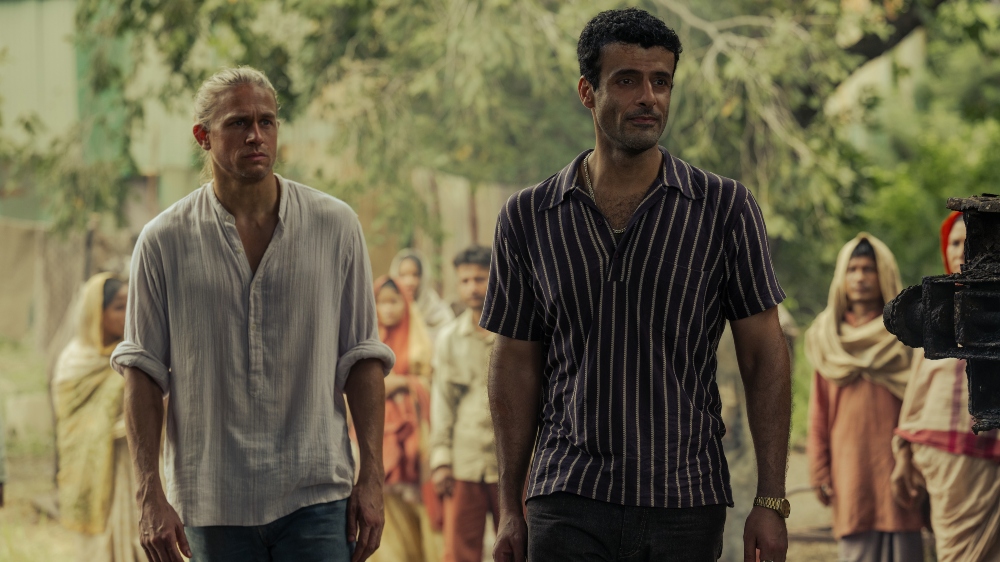
BTL: What was your favorite scene to shoot and why?
Duscio: I loved filming in Rinaldo’s Bar. It was one of the most exciting locations for me to create when I read the script and to create that sense of wanderlust and activity and characters and romance and glamour in that bar. I think initially there was a bit of pressure for us to do that on a stage with possible green screens outside the window and keep it all quite contained, so we could shoot during the day. Once myself and the whole filmmaking team saw this possible location in Bangkok, which we could convert into Rinaldo’s and see all our city streets outside the windows and have all the sliding doors open, all our imaginations started running wild because we realized when we shot scenes in Rinaldo’s, we could see the world outside. We could see the world of Mumbai. We could have vehicles, we could have food stalls, we could have markets. I could have [the] sun streaming in through those windows and doors. We could follow Lin (Hunnam), as he walks from outside the bar, into the bar, and back out again, [so] we were able to design scenes much more dynamically. It just felt like it had so much depth all the time. You just believed the world outside [of] those doors. I was so excited about it. Steve [Lightfoot] told me it was our “Casablanca,” this place. I took a real cue off that and just sort of unashamedly went quite glamorous in there when our key cast [was] around a big dining table looking hot and sweaty and warm.
BTL: What are you most proud of when it comes to Shantaram now that you’ve watched the whole series?
Duscio: The whole production in general, just because of the Covid of it all. It felt like every week was a gift. It felt like every week, we could be shut down [by] Covid lockdowns across Melbourne and Bangkok, which [were] so restrictive. So every time we finished another episode or another day or another week, I was like, “Oh my God, I can’t believe we did it.” So just the act of making the show at all after people have been trying to make Shantaram for the last 20 years felt like an achievement in itself. I’m thrilled that it’s finally out in the world.
For my work, in particular, I hope they kind of find it invisible, in a way. I tried to shoot it in a very kind of classic way and not assert myself too stylistically on top of the material. I hope audiences feel a great feeling of curiosity and wanderlust for the country of India and fall in love with India. I hope they fall in love with all the characters. I hope they find the show complex and I hope they find there are no easy answers to anything. They aren’t black-and-white characters; they’re all characters with wide emotional complexity, and there are grays.
Shantaram is now streaming on Apple TV+.





